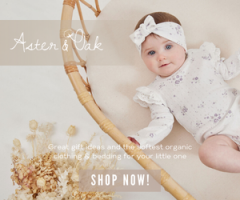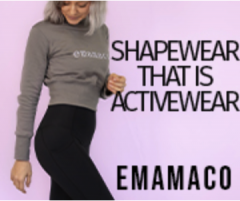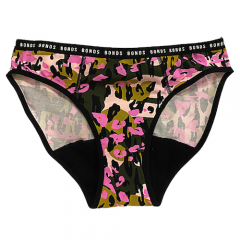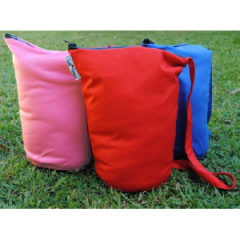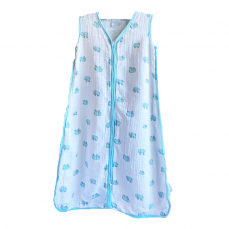Developing Dressing Skills Clothes Suitable for stages: 6 - 12 Months, 12 - 18 Months, 18 - 24 Months
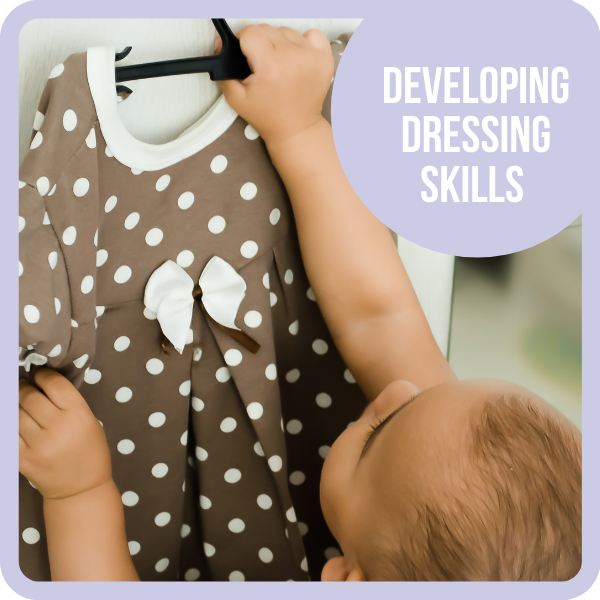

Once your baby is mobile and starting to get steadier on their feet, a whole world of new skills can start to develop. They are developing strength, balance, coordination, and the ability to make choices which all contribute to their ability to become more active in the dressing process.
You can continue to lay your growing baby down on the floor for dressing, but now you can also choose to do parts of the process with them sitting up or standing up. They may also start to protest about lying down as they are too busy these days to be lying down waiting for you to help them get dressed.
Dressing has become easier as your baby has developed more strength. Building dressing skills will be that much easier if you have started from a young age talking to your baby, naming their body parts, and describing what you are doing. As they get stronger and more able, you can ask them to participate more actively in the dressing process.
There are many ways to make dressing fun and get your baby/toddler to join in the fun. Your job is to hit that just right mark where they can participate using their skills in moving their body parts, sitting, standing or balancing. If you do just enough to help them succeed, and they do the rest. You find a way to have fun with it, and they will join in the fun.
We will go through some hints and tricks to get the just-right balance during dressing activities to engage your baby (and make it fun for you too)!
When lying down:
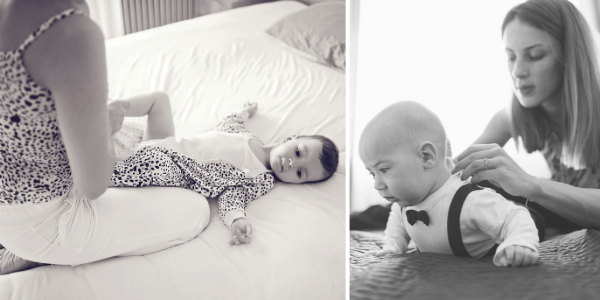
When your baby gets more active and won't lay down long enough to get through the whole dressing process, you'll need to change tactics. You can try to get them to lie down on a rug or change mat on the floor. That way, you can start with them lying down. You can then easily adapt if your active baby has other plans and starts to sit up and crawl or walk off.
Ideas to engage your baby in the dressing process:
- They lift their head while putting the shirt/onesie's headhole or dress over their crown. The clothing can then be pulled over the head to the shoulders (the perfect peek-a-boo moment or saying "Pop!" in a fun voice when the head comes through).
- They hold their hands in a fist, and you help them find the armhole to push their arm through the sleeve (you can say 'Pow!' in a fun voice when the hand comes through).
- They hold onto their legs up over their body while you wipe their bottom (you can sing "This is the way we wipe your bum, wipe your bum, wipe your bum", then repeat until all done)
- They lift their legs while you pull their pants over their feet (it's fun to say "pop" when you get the foot through)
- They lift their bottom by pushing through their feet while you pull their pants over their bottom (if this is the last step, say "All done!")
Dressing in the sitting position:
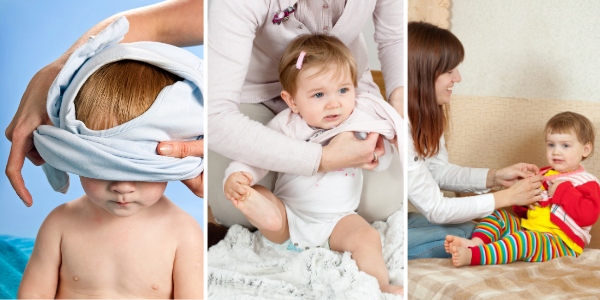
There are a few ways to help your baby to dress when sitting up. You can be positioned behind them or in front of them where you can reach them and their clothes. If your baby is just starting to sit up, you can sit them in your lap facing away from you to support them while you dress them.
Ideas to engage your baby in the dressing process:
- They can sit up while you pull their head through the head hole to their shoulders. While the clothes are going over their head, support them using your body or hands in case they lose their balance and say 'pop' or 'peek-a-boo' once the clothes are at their shoulders.
- Then get them to make fists at shoulder height and elbows tucked in next to their body. They just need to find the armhole (with your help), and then punch their fists through.
- For lower body dressing, either get them to lie down or bring them onto your lap. While you support them in sitting using your body or one of your arms, you can put their feet through the leg holes one at a time or at the same time of the pants or shorts, you can then pull the pants over their bottom while you support them in standing or they go forward on all fours for the final bit.
Dressing in the standing position:
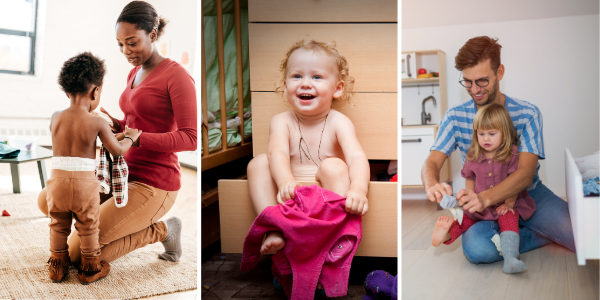
Once your baby is starting to pull themselves up into standing (with support), you can practise this skill during dressing. Over time they will develop better standing balance and you can provide less support as they need less support. Once they are walking, you will need to engage them in the dressing process to make it fun, otherwise, they will decide they'd rather be off exploring other things.
Ideas to engage your baby in the dressing process:
- For dressing their top, their standing balance may be thrown off whilst their head is pulled through the head hole. Make sure they have a good grip on something solid like you or a piece of furniture, cot or bed while you pull their head through the head hole.
- They can then push their arms through their armholes one at a time (while you make sure the armholes are in the right position), taking turns holding on with the other hand.
- It will take time for your toddler to develop the strength to stand and balance on one foot to dress the lower half. You can face them away from you while they lean against your legs for support while you lift their legs in one at a time or both at once. Once they can stand on one foot, they can hold onto your upper arms while they lift their feet into the pants one at a time and hold on while you pull their pants up or attempt to pull their pants up independently.
Making Clothing Choices
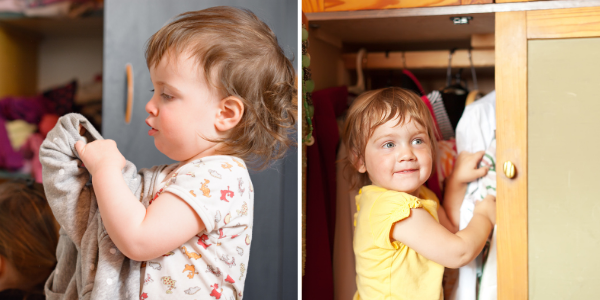
The next step is to involve them in choosing their clothes. Learning to make choices and having the independence to make their own decisions is a huge milestone for your toddler. Your toddler will be naturally driven and may even demand to make their own choices. This usually starts with them refusing to put on the clothes you have picked for them. This can significantly add to the time it takes to get dressing done. Although it is frustrating and requires patience, this is a normal part of your toddler developing autonomy and practising making choices.
When this stage hits, there are some things you can do to help things along:
- Talk to them while you get dressed. You can explain to them what you are putting on and why. For example, "I'm putting on my summer dress. This dress will be great to wear to the beach today. It will keep me cool. It's going to be hot today."
- Then you can help them get dressed and continue to talk to them about the planned activities for the day, the inside temperature and the weather outside. For example, "It's cool inside now, but it is going to be a hot day outside today".
- You can then talk to them about what they could wear today, e.g. "Shorts would be great today as it will be hot. Shorts are a great choice for playing outside. These ones will help you move fast!"
- Relate getting dressed to an activity they enjoy. For example, if they love going outside, remind them that they need to get dressed first, and then they can go outside.
- To give them choice and control, try presenting 2 different clothing options. Then ask them what they want as you show them the options, "Do you want to wear the red or the blue one today?". It's a compromise where they get to practice and succeed in making a decision and satisfaction that they chose for the day. This solution is also quick and avoids the mess of having extra clothes pulled out of the drawer and discarded.
- Try laying out one or two clothes options for the next day the night before. This helps set expectations and gives plenty of thinking time to make their choice before it's time to get dressed.
- Depending on your child and their developmental stage, you can give them some responsibility and opportunity to access their clothes. This Montessori idea is to set up the home environment to have your child's things within their view and reach. The idea is that they have more opportunities to participate and learn responsibility for their things because they can help get things out and put them away. If you want to try this, you can have their frequently worn clothes in the lowest drawers or shelves that can be accessed by your child. You can organise them to see each item of clothing, and they know which drawer or shelf to go to for each type of clothing. You can also set up a low-hanging rack for them to use such as the Mocka kids house hanger and Minka A-Frame - Small and Large. You can get keen with a label maker which will help you keep things organised and eventually help them with pre-reading skills.
Taking dressing milestones day by day
At each stage, your baby, toddler and child will be delighted with their new-found skills in participating in dressing. Who said dressing can't be a fun part of the day?
The following resource gives you an idea about how dressing skills typically develop and at what age. You can see how each stage builds on the last when your child is developmentally ready. Each developmental leap provides your baby with a new understanding of the world and their place in it. Each dressing experience you expose them to contributes to dressing skill development. Having the expectations of just how long it will take for your baby to develop all the skills they need to be independent with dressing can help you to be patient and understanding along the way.
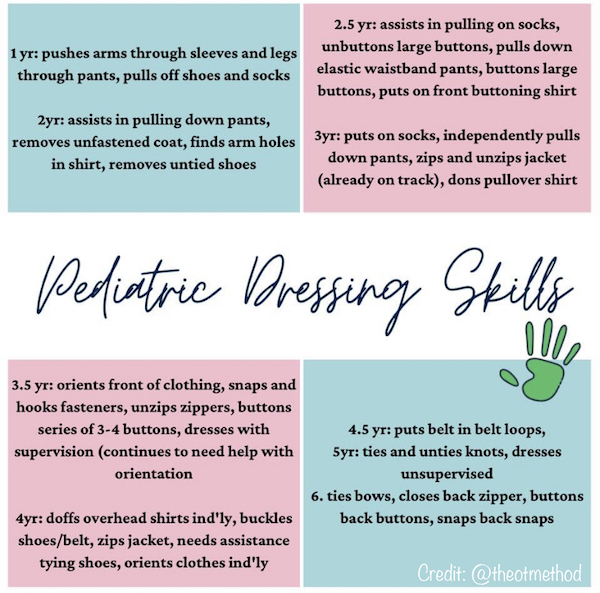
Don't forget to have fun!
Please note: Above all, any information on this website aims to provide general ideas for informational and educational purposes only. We encourage users to investigate several information sources, including, where necessary, independent individualised medical advice before making any decisions that could affect you or your child’s health or wellbeing.
* BabyPeg participates in various affiliate programs and may earn a commission for referring our users through the links provided. This is at no additional cost to our users. We take great care in choosing products and services that align with the mission of promoting better health and wellness for our BabyPeg community. Where possible, products are tried and tested by us. To continue to provide BabyPeg as a free service and reach as many parents as possible, we appreciate your support in using the link provided to purchase if you decide the product is right for you.
